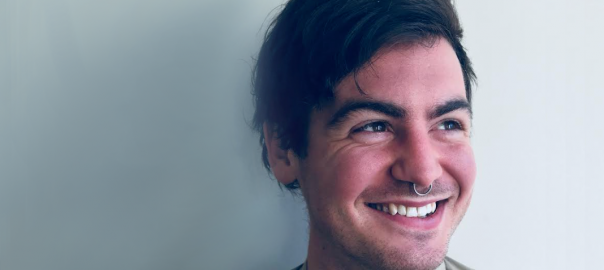Prestigious fellowship provides funding to pursue research on fundamental problems in marine microbial ecology.
by Helen Hill | MIT Darwin Project
It was recently announced that B.B. Cael, a graduate student in the MIT-WHOI Joint Program working with Prof Mick Follows in the Department of Earth, Atmospheric and Planetary Sciences, has been awarded one of nine 2018 Simons Postdoctoral Fellowships in Marine Microbial Ecology.
To-date, applied-mathematician-turned-oceanographer B.B. Cael’s research (which has also fruitfully diverged into examinations of patterns in abundance and geometry of water bodies drawing on classical models from statistical physics) has paired novel and careful data analysis with simple mechanistic theories to address long-standing questions about marine microbial ecology and its intersection with biogeochemical cycles in aquatic systems.
The research Cael successfully sought Simons Foundation support for builds on work related to his thesis research on the export of biogenic carbon out of the surface ocean and attenuation of this sinking flux through the ocean’s interior.
“Phytoplankton living in the sunlit surface ocean mediate the transformation of energy, carbon, and inorganic nutrients within the global marine biosphere,” Cael explains. ‘The production of these phototrophs not only fuels the ecosystem dynamics of the surface ocean, but also serves as a major source of organic material to the largest habitat on earth: the deep ocean. A portion of organic matter production ultimately rains downward from the upper ocean into and through the ocean’s interior. This vertical transport of mass and energy connects the entire ocean microbiome and constitutes a fundamental aspect of marine microbial ecology and biogeochemical cycles.”
A variety of ecological and physical processes act to form sinking particles, which are subsequently consumed and degraded as they descend to the darker depths. This sinking particulate matter (SPM) is thought to be the primary contributor to the vertical transport of organic material in the ocean, and has therefore been of sustained and substantial interest to oceanographers. “In the open ocean, the fraction of SPM that is not ‘remineralized’ or degraded by microbes in the photosynthetic zone, becomes sequestered well below the permanent thermocline and is effectively removed from exchange with the atmosphere for decades to millennia,” says Cael. “This process is one of many ways in which ocean ecology plays a role in our planet’s climate.”
Despite its central importance in connecting surface and subsurface communities, removing carbon and other elements from the surface and redistributing them through the water column, including sequestering large amounts of carbon in the deep ocean for long times, details of the SPM flux remain in general poorly understood.
With his new Fellowship, Cael will collect a suite of measurements which will allow him to develop and test plausible and mechanistic theories for the SPM flux that can form the basis for its improved representation in, e.g., climate models.
“It is key to note that the problem of how organic matter propagates downwards in the ocean is as inscrutable and complicated as it is ecologically and biogeochemically integral,” says Cael. “Our objective is to improve understanding of this process by generating sufficient constraints to ask meaningful and targeted questions that can be tested in-situ. Based on those observations it will then be possible to either validate or reject our theoretical predictions either corroborating our theory as a model for SPM flux and its relationship to upper ocean ecology, or indicating significant modifications are needed to account for other processes altering the particles formed by upper ocean ecosystems, and how they settle and/ are consumed by microbes below.
Cael will be hosted by Dr Angelique E. White, an Associate Professor Department of Oceanography University of Hawai’i.
Cael holds a BA (2013) in Mathematics, Human Biology, and Philosophy and an MSc (2014) in Applied Mathematics, both from Brown University.
Also receiving 2018 Simons Foundation Postdoctoral Fellowships are alumnae of the MIT-WHOI Joint Program Emily Zakem PhD ’17 and Nicholas Hawko PhD’17. Zakem, herself a former member of the Follows Group at MIT, will explore “what controls the transition from aerobic to anaerobic microbial activity in the ocean” (working in the laboratory of Prof Naomi Levine at the University of Southern California.) Hawko will work on “regional versus phylogenetic inheritance of iron metabolic traits in Prochlorococcus” working in Prof Seth John’s laboratory, also at the University of Southern California. A complete list of the award recipients and their projects is available at the Simons Foundation website.
The Simons Foundation exists to advance the frontiers of research in mathematics and the basic sciences. Its Life Sciences division supports basic research on fundamental questions in biology. The division currently focuses on origins of life, microbial oceanography, microbial ecology and evolution, and support of early career scientists.
Related
Five from MIT earn Simons Foundation Postdoctoral Fellowships in Marine Microbial Ecology MIT News
